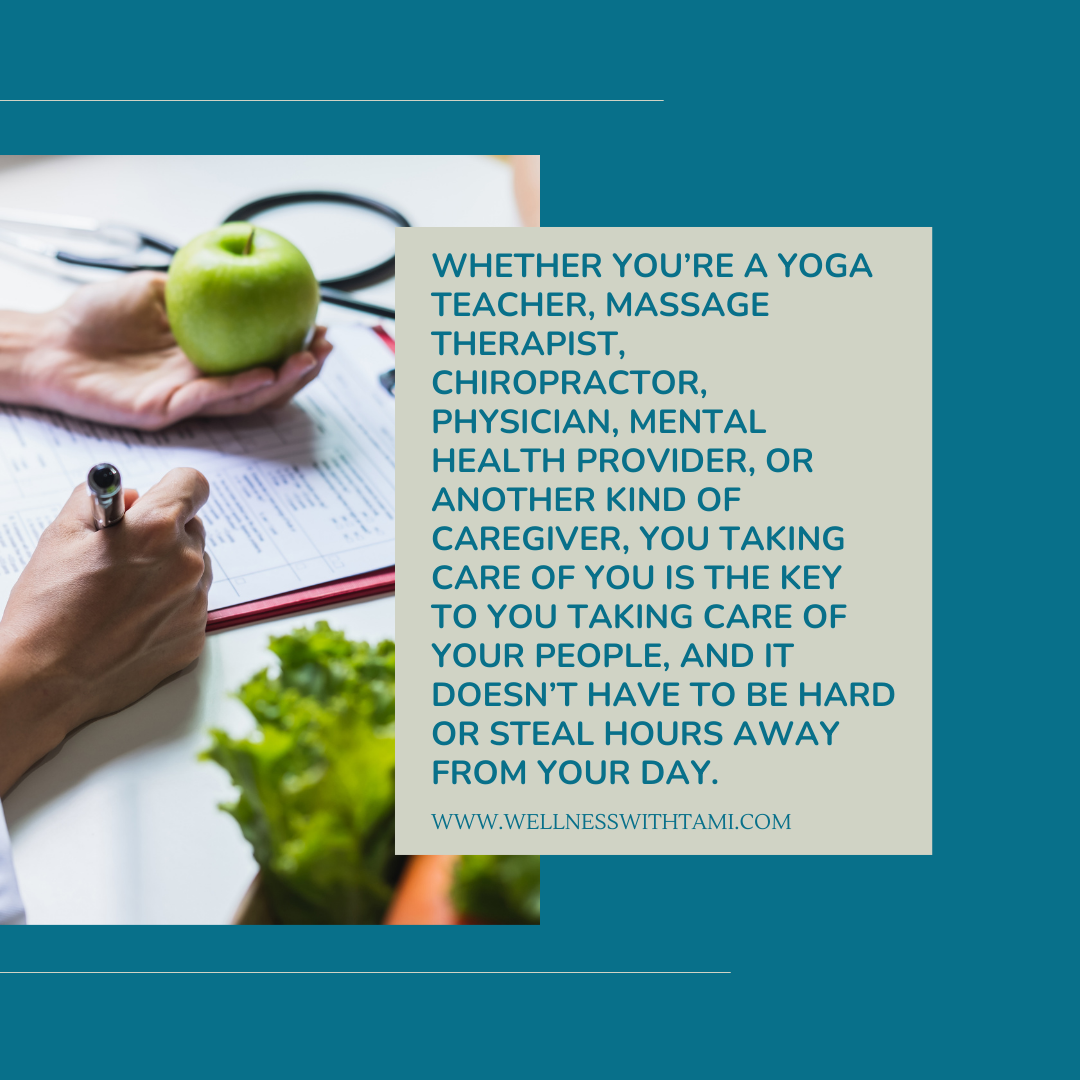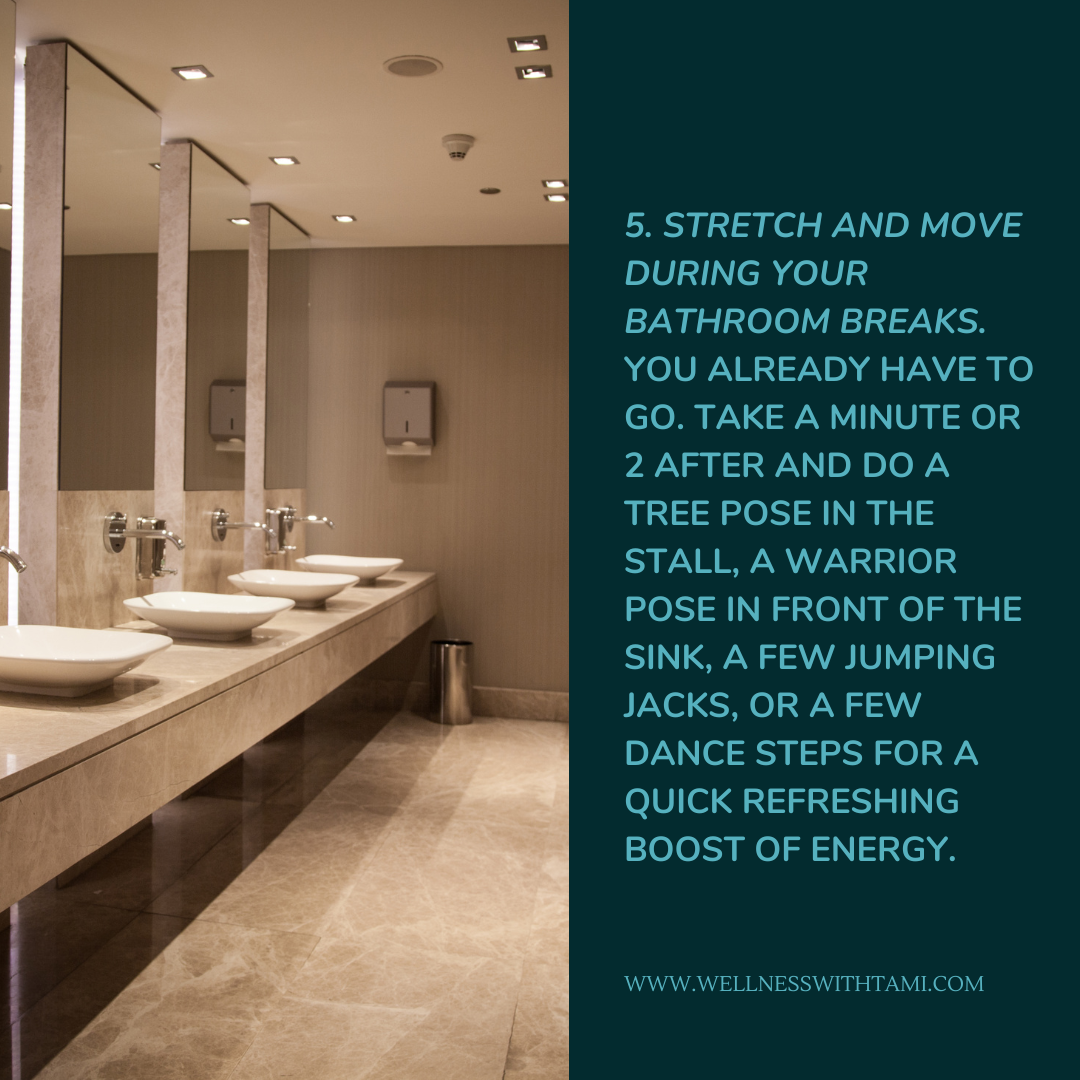5 Quick and Easy Ways to Start Layering Wellness into Your Busy Schedule
Back when I was teaching a bazillion yoga classes and privates a week, I remember how tough it was to find time to eat. I’d often have a protein bar or apples with peanut butter in the car between locations, or a bite of dark chocolate between classes, rather than a proper meal.
Though I focused on making sure I had relatively healthy food with me most of the time, I often ended up bloated from eating on the run and tired from not eating enough at appropriate times. I’d get home and eat dinner late, and wake up the next morning feeling like a mess, only to do it all over again the next day.
At the time my handsome hubs and I lived in Chicago, and rushing around from studio to studio in the city also took its toll on my nervous system. I had to make a conscious effort to calm down and not let the rushing affect my clients or the practice.
It just wasn’t sustainable. I was almost always tired and felt sick a lot of the time.
If you’re a busy wellness professional, you know how challenging it can be to find time to take care of your own wellbeing, especially if you run your own business. You might see client after client or patient after patient all day with barely enough time to use the restroom let alone eat. Or perhaps you aren’t fully booked, so you spend your time running around and stressing about finding more clients.
Whether you’re a yoga teacher, massage therapist, chiropractor, physician, mental health provider, or another kind of caregiver, you taking care of you is the key to you taking care of your people, and it doesn’t have to be hard or steal hours away from your day.
Why focus on your own wellness when people need you?
Precisely because your people who need you.
Although you might think of self-care as selfish when there are so many people who you could be helping with your services, eventually you won’t be able to serve anyone if you don’t attend to your own wellbeing.
True self-care—things like getting enough sleep, eating healthy foods for you, moving your body, taking care of your financial wellness, cultivating healthy relationships—is the foundation you need for being able to take care of others.
If you neglect your own wellbeing, at the very least, it could affect your performance. When you’re thinking about that argument with your friend or how you’re going to pay your bills, you’re not able to be fully present with your clients.
If you disregard your self-care and put enough stress on your system, you could end up sick. Whether it’s a short-term illness like a cold or a long-term malady like cancer, you could become unable to help anyone for some time.
When you forsake your own wellness, you ask your clients to do as you say, not as you do. If you don’t walk the talk and serve as a model for your clients, you’re in essence impeding their ability to make changes as well. It’s a lot harder for them to make the changes you want them to make in their lives when you’re not modeling what you’re asking them to do.
I’m not here to shame anyone. Late nights and French fries happen sometimes. You don’t have to be perfect.
The important thing is to recognize the greater impact your wellness has on those you’re serving.
Maybe you don’t need to hear this message. I know I have to remind myself, and I figure if I need the reminder, you might too.
What to Do to Start Layering Wellness into Your Busy Schedule
If you can’t take an extra couple of hours each day for your self-care, never fear. You can start small.
Here are the practices that keep me sane during the busy times and help prevent me from going back to a pace that takes away from my wellness.
Breathe.
You already do it. Make it more mindful and calming by lengthening the exhalation. Your breathing affects your client too. Never underestimate the power of your breath to change your state and affect folks around you.
Focus your mind.
It’s already thinking, and chances are it’s worrying about what’s next on your schedule, second guessing your decision about something, obsessing about an argument you had, or dwelling on some other concern. In the moments when you’re not talking to or working on your client, slow down and spend even just a few breaths silently repeating “joy,” “peace,” “OM” or whatever mantra helps you move into a more relaxed yet focused state. Better yet, spend a few minutes after you eat your lunch repeating this mantra or visualizing something that brings you peace or makes you light up with joy—your child, your fur baby, a sunset, a candle flame. Whatever it is, feel the joy it brings you as you keep bringing your mind back to it for a few minutes.
Pad your schedule.
Trying to use every last minute in your schedule can sometimes backfire and leave you rushing to be somewhere on time. If you’re late it can throw off your whole schedule. If you’re rushing, your client likely can feel it and might think they’re not important to you. Instead, build in more breaks and buffer times and make them non-negotiable. If something unexpected comes up, you’ll be more likely to have time to adjust and re-center before the next client arrives.
Say no and share the love.
Are you really serving someone when they get a delirious, worn out, hangry version of yourself because you said yes when you should have said no to adding more meetings to your schedule? Give someone else an opportunity to shine by sending some referrals their way. There’s enough for everyone.
Stretch and move during your bathroom breaks.
You already have to go. Take a minute or 2 after and do a Tree Pose in the stall, a Warrior Pose in front of the sink, a few jumping jacks, or a few dance steps for a quick refreshing boost of energy. I used to do this one even back before I became a wellness professional. It works every time.
Will these small steps solve all your health and wellness problems? Most likely not.
But it’s a start.
Even just these little practices can make a world of difference in how you show up for your people. As you start to see the difference these quick and easy steps can make, perhaps you’ll find yourself leaning more and more into actions that support your own wellness, in service to your people.
Being a caregiver of any kind begins with caring enough about your people to care for yourself.
If you’re a wellness provider, what’s your biggest challenge when it comes to your own wellbeing? Let me know in the comments!
This information is for educational and informational purposes only and solely as a self-help tool for your own use. I am not providing medical, psychological, or nutrition therapy advice. You should not use this information to diagnose or treat any health problems or illnesses without consulting your own medical practitioner. Always seek the advice of your own medical practitioner and/or mental health provider about your specific health situation.


